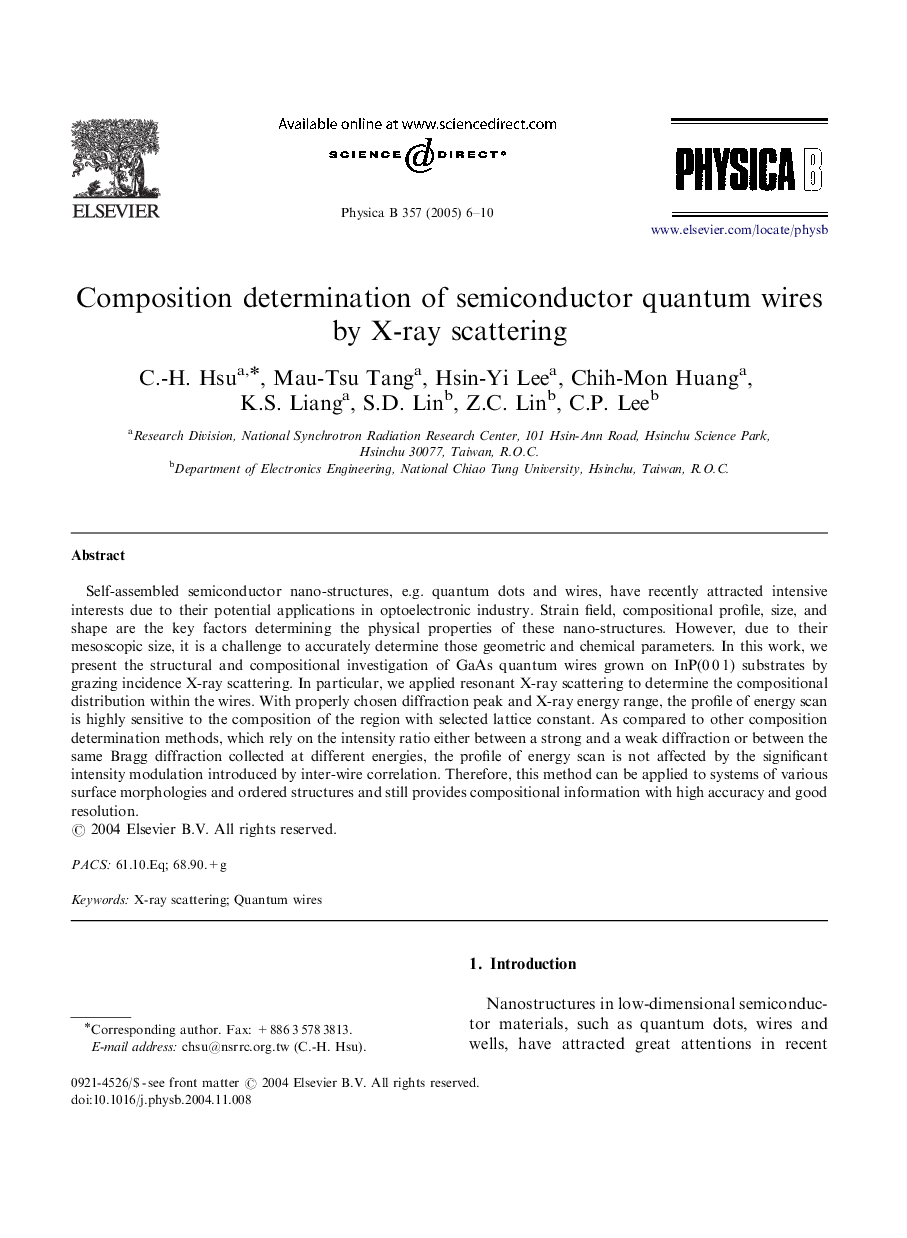| Article ID | Journal | Published Year | Pages | File Type |
|---|---|---|---|---|
| 9837849 | Physica B: Condensed Matter | 2005 | 5 Pages |
Abstract
Self-assembled semiconductor nano-structures, e.g. quantum dots and wires, have recently attracted intensive interests due to their potential applications in optoelectronic industry. Strain field, compositional profile, size, and shape are the key factors determining the physical properties of these nano-structures. However, due to their mesoscopic size, it is a challenge to accurately determine those geometric and chemical parameters. In this work, we present the structural and compositional investigation of GaAs quantum wires grown on InP(0Â 0Â 1) substrates by grazing incidence X-ray scattering. In particular, we applied resonant X-ray scattering to determine the compositional distribution within the wires. With properly chosen diffraction peak and X-ray energy range, the profile of energy scan is highly sensitive to the composition of the region with selected lattice constant. As compared to other composition determination methods, which rely on the intensity ratio either between a strong and a weak diffraction or between the same Bragg diffraction collected at different energies, the profile of energy scan is not affected by the significant intensity modulation introduced by inter-wire correlation. Therefore, this method can be applied to systems of various surface morphologies and ordered structures and still provides compositional information with high accuracy and good resolution.
Related Topics
Physical Sciences and Engineering
Physics and Astronomy
Condensed Matter Physics
Authors
C.-H. Hsu, Mau-Tsu Tang, Hsin-Yi Lee, Chih-Mon Huang, K.S. Liang, S.D. Lin, Z.C. Lin, C.P. Lee,
